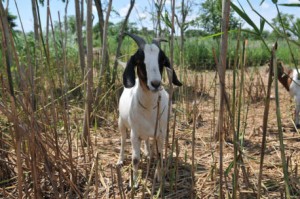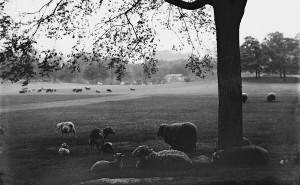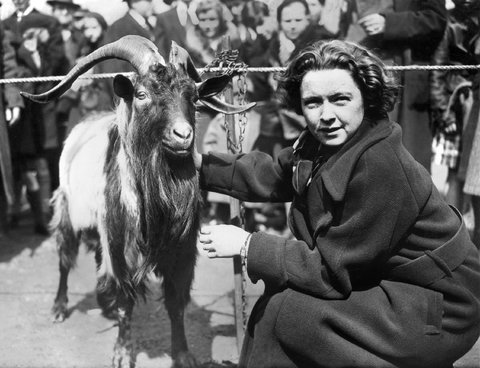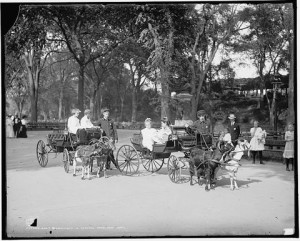From Behind the Mounds: A New Trend or NYC Parks Tradition?
You may have read our recent blog post about the herd of goats that were used in Freshkills Park to clear the invasive reed Phragmites, but did you know that goats were once a common fixture in New York City?
Although the idea of goats in NYC may seem like a strange idea, goats and sheep are not a new addition to our urban landscape. Sheep were used to graze the famous Sheep’s Meadow in Central Park beginning in 1864. The restaurant, The Tavern on the Green, was once called Sheepfold and was used to house 200 sheep and their shepherd. The sheep remained at the park until 1934, when Robert Moses moved the sheep to Prospect Park before they were finally relocated to the Catskills 100 miles north of New York City.
Goats were also present in New York City at this time. They were so common (at least not so uncommon) that Central Park was home to an annual goat beauty pageant. During the mid 1930s the Bock Beer Beauty Contest took place in Central Park. The New York Times reported on the 1934 winner Pretzels, “A non-resident goat from Hastings-on-the-Hudson won out over 23 nervous but native competitors yesterday in the Bock Beer Beauty Contest in Central Park. The other goats had citizenship, but Pretzels had beauty, which overleaps the barriers of time, space, and nationality. He had magnificent swirling horns, a long sagacious beard, and a relatively sweet disposition.” Pretzels was permitted to enter only because his owner lived on W. 26th Street.
In the early 1900s goats were also used to pull children in carriages in Central Park.
The tradition of goats in New York City goes so deep that according to the New York Public Library, the word Gotham is borrowed from a reference in old English proverbs to “a village called Gotham or Gottom, meaning ‘Goat’s Town’ in Anglo Saxon.
All laughs (or bleats) aside, the reintroduction of goats and sheep into NYC Parks could have a host of benefits according to new research by Duke University. Researchers at Duke reported that controlled grazing can reduce the stem density of Phragmites by half in three weeks. Utilizing goats has proven to be more sustainable and cost effective than the use of herbicides and machinery in the mitigation of Phragmites. Additionally, the absence of herbicides allows the native reed to grow back five-fold. The use of goats would not only be beneficial for the environment, but would support farmers by paying them to provide livestock and giving them access to free pasture land.
As the use of goats to clear public spaces proves to be more beneficial and popular, goats could once again become a common fixture in urban life.








